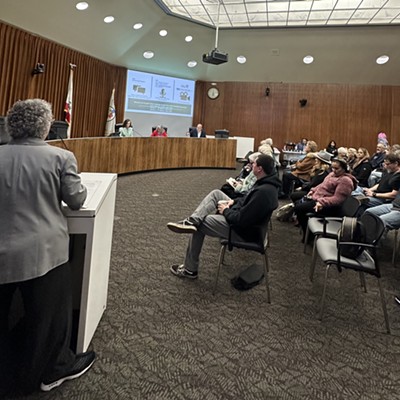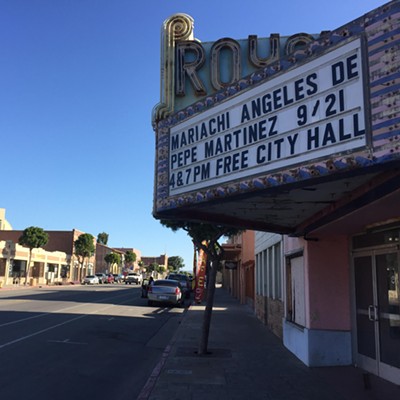
First-time candidates Gloria Flores and Benjamin Ortiz are fighting long-time councilmember Mike Cordero for the Santa Maria City Council 2nd District seat.
The 2nd District sits between N. Railroad Avenue and N. Suey Road, with the 1st and 4th districts hugging its west and east sides. The Santa Maria River acts as the district’s northern boundary and a small portion of it touches the Main and Broadway corridor. Cordero served both Carpinteria and Santa Maria police departments before becoming a Santa Maria City Council member from 2008 to 2012, and earning his seat again in 2016 and 2020.

“I’m looking forward to doing this again. I’ve enjoyed it, I believe I’m going to give you and other constituents a value for your dollar,” Cordero said. “The city has been outstanding to me. … I’m looking forward [to] one more opportunity to serve our community in a methodical, fiscal, and meaningful way.”
His seat is one of three city races on the November general election ballot, with three candidates running for Carlos Escobedo’s 1st District seat and four candidates now running in the mayoral race. The City Treasurer and City Clerk’s roles—also up for reelection—both only have one candidate in each race.
Flores relocated to Santa Maria eight years ago to be closer to her son after living in Sacramento for 30 years, where she and her husband often visited the Central Coast due to her husband’s work as a traveling chaplain. In the state capital, Flores worked as an advocate for Child Protective Services and reunited foster families, she said.
Ortiz grew up in Santa Maria’s 2nd District and attended local schools before moving to the Bay Area to study city planning at UC Berkeley. He stayed in the area for nearly a decade before returning to his hometown in 2022.
“I don’t think that was in my life plan either. I’ve typically existed in sort of background roles or support roles, never the face of anything,” Ortiz said. “This has been a real personal growth experience, but it was just something that I’ve felt very strongly about the need for a change in leadership and a change in direction in Santa Maria.”
All three candidates are prioritizing affordable housing and addressing homelessness—along with job development and public safety—but the candidates propose different solutions.
Flores and Ortiz criticized the city for not taking more of an active role in addressing homelessness and emphasized developing a stronger partnership between Santa Maria and Santa Barbara County. Ortiz said he wants to see a line item in the budget and the city take on a larger role in housing projects
“Whereas Hope Village was a county project collaborating with a local nonprofit, I would want to see, at the very least, the city cooperating with those efforts and making city land available to help with those efforts,” Ortiz said. “My dream of dreams is Santa Maria coming up with its own program for helping people here.”
Flores said she wanted to see the city allot funds to establish a homeless task force that would provide resources directly to and find housing for constituents.
“We aren’t finding the solution by moving them,” she said.
Cordero said that the city relies on nonprofits to provide services, and it does contribute to the organizations’ budgets.
“The answer always carries with it: money. The common denominator in solving these problems is money and none of us ever have enough money,” Cordero said. “It’s difficult at best to come up with a solution.”
On the housing side, Flores said she wants to establish rent control to help people live according to their income.
“How are people going to stay here if they are going to have to pay almost a mortgage for an apartment?” Flores asked. “I think there are ways to get that rent stabilized and people live according to their income. Eventually, they’ll buy houses here, but we have to find ways to be able to help with that.”
Instead of rent control, Cordero and Ortiz see development as the way to bring more affordable units into the city, with Cordero emphasizing the city’s current efforts on its downtown properties like the old Fallas building, and eventually Richards Ranch—a housing development simultaneously working its way through the city annexation process and county approval process for development.
Ortiz wants to see continued infill development in the city that relies on current infrastructure to keep construction affordable and develop a wider variety of housing options like duplexes or triplexes to “slowly relieve the pressure on the housing market,” he said.
“Right now, most of the developments we build in Santa Maria are single-family homes with three to four bedrooms with a big yard,” Ortiz said. “I’d be looking at exploring ways to gently allow for the different kinds of development within our neighborhoods.”










